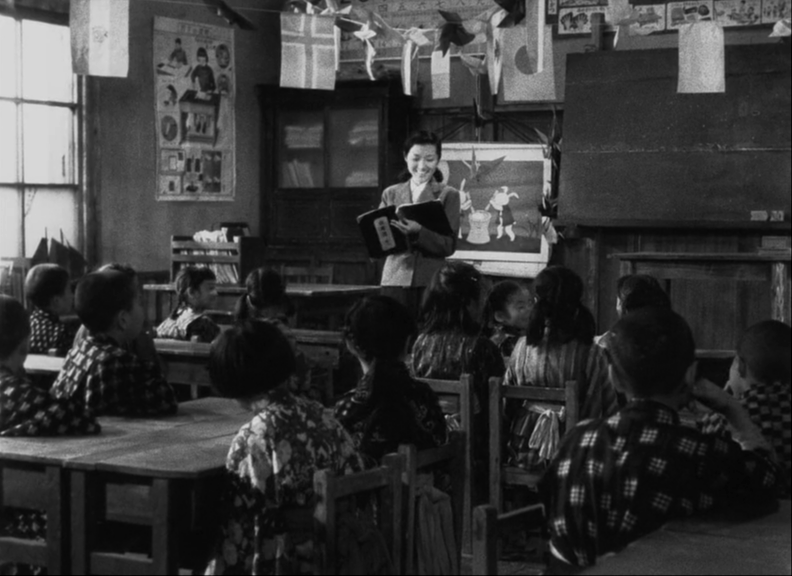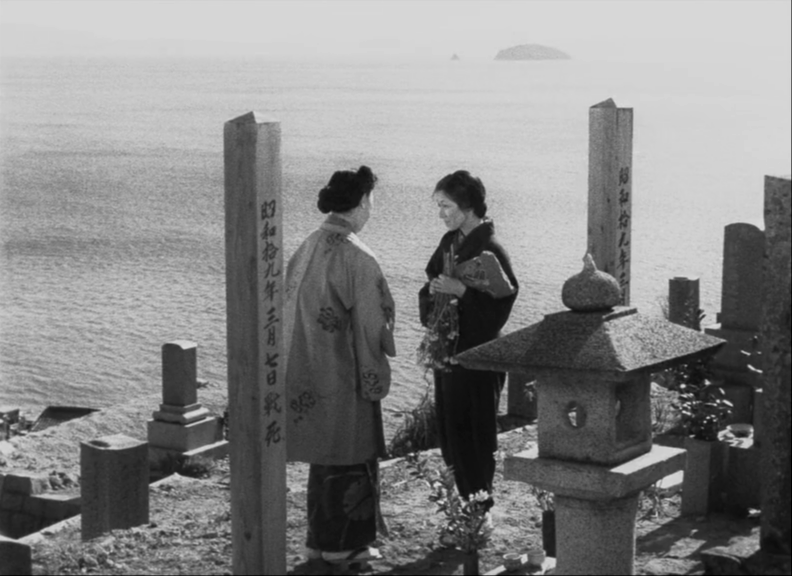The Distance of Time

Very much enjoyed Keisuke Kinoshita’s TWENTY-FOUR EYES, which resolves some unique dramatic issues inherited from a source novel in some very interesting ways.
It’s about a schoolteacher and her first class, twelve kids. That’s already too many characters to keep straight. Then there are the schoolteachers’ family, various parents, other school staff. And the story covers decades so all the initial kids get swapped out by new actors. The film is quite long, but that’s a crazy number of people to keep straight.


It’s also a film with a lot of tragedy in it. The story starts before the war and the boys are the right age to enlist when WWII starts. There’s also illness, financial problems, death in childbirth. So there is a lot of crying, no way to avoid it even if you invoked a bit of Hawksian staunchness. “Tragedy is when the audience cries, not when the actors cry,” but sometimes, quite a lot in this case, there is no way realistically to avoid tears.
Kinoshita likes distant framing, and this has a couple of very positive effects, quite apart from the scenic values it brings in. The kids are often seen as a group, and I never felt pressured to remember particularly who was who. I had more of a general sense, but they definitely all had personalities and developed in different ways through their distinctive subplots. As a teacher — an aging one — I often feel pressured to remember lots of names in reality, so I don’t want that in my movies. But here it was fine.

And the wide shots added a certain discretion to the treatment of emotion. No up-close blubbering, though I don’t mean to imply we’re in a Roy Andersson film without closeups. It’s just that Kinoshita often goes wide when you might expect the opposite. The considerable space around the actors enhances aspects of the emotion but stops it being overwhelming in a bad way. Space = Time in an odd way, so that there’s an “emotion recollected in tranquility” sense to it. Welles talked about how, though the old line about how “comedy is long shot, tragedy is closeup” is broadly accurate, the TRUE long shot, the small figure in the vast landscape, takes us right back to tragedy again.




Kinoshita uses a lot of Western tunes, often quite emotionally loaded ones like Ford’s favourite hymn “What a Friend we have in Jesus,” and one would bet that he’s a Ford fan (like Kurosawa) but his wide shots are subtly different in effect/affect, there’s a little more, hmm, neutrality?
But I watched it with friends and we all cried buckets.
April 25, 2024 at 2:58 pm
Cry more buckets!
https://thechiseler.org/home/which-genocide-are-you-on